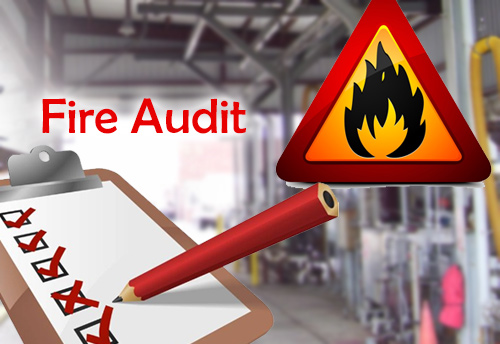Fire audits are a crucial part of ensuring safety in any facility. They identify potential fire hazards, assess compliance with safety regulations, and help organizations implement preventive measures. Conducting an effective fire audit requires a systematic approach to minimize risks and safeguard people and property. Here, we outline ten key steps for a thorough and efficient fire audit process.
1. Understanding the Purpose of a Fire Audit
Before initiating a fire audit, it is essential to understand its objectives. A fire audit evaluates fire safety measures, checks compliance with fire safety standards, and identifies areas of improvement. This process helps organizations ensure adherence to legal regulations and promotes a culture of safety.
Keyword Usage: For expert guidance on conducting a fire audit, visit the Fire Audit page.
2. Familiarizing Yourself with Fire Safety Standards
Familiarity with national and international fire safety standards is vital. Standards such as the National Fire Protection Association (NFPA) codes or local regulations set the groundwork for audits. These guidelines detail the design, maintenance, and operation of fire safety systems.
3. Creating a Fire Audit Checklist
A comprehensive fire audit checklist ensures no critical aspect is overlooked. It typically includes fire extinguisher inspections, sprinkler system functionality, emergency exit pathways, alarm systems, and fire drills. A checklist serves as a roadmap for conducting a systematic and thorough audit.
4. Reviewing Fire Safety Documentation
Documentation plays a pivotal role in a fire audit. Review existing fire safety policies, equipment maintenance records, and evacuation plans. Assess whether staff training programs are adequately documented and up to date. These documents reflect the organization’s commitment to fire safety.
Keyword Usage: A robust audit process also involves a Safety Audit that encompasses all facets of organizational safety.
5. Inspecting Fire Safety Equipment
Physical inspection of fire safety equipment is one of the most critical steps. Verify that fire extinguishers are accessible, properly maintained, and within their expiration dates. Test fire alarms, sprinkler systems, and smoke detectors to ensure they are operational and in compliance with safety standards.
6. Evaluating Fire Hazard Risks
Identify and evaluate potential fire hazards within the facility. These may include improperly stored flammable materials, overloaded electrical circuits, or blocked emergency exits. Risk evaluation forms the basis for implementing corrective actions.
Keyword Usage: Conducting a Hazop Study can provide a deeper understanding of process hazards related to fire risks.
7. Assessing Emergency Response Preparedness
A fire audit must evaluate the organization’s emergency response systems. This includes verifying the presence of clear evacuation plans, conducting fire drills, and assessing staff awareness of emergency protocols. Effective preparedness can significantly reduce the impact of fire incidents.
8. Involving a Safety Consultant
Engaging a professional Safety Consultant adds expertise to the fire audit process. Consultants bring an objective perspective and deep knowledge of fire safety standards. Their insights can uncover overlooked risks and recommend effective solutions.
9. Implementing Corrective Measures
After identifying gaps or risks, the next step is to implement corrective measures. This may involve repairing faulty equipment, updating safety policies, or conducting additional training sessions. Ensure all actions align with fire safety regulations.
10. Regular Review and Continuous Improvement
Fire audits should not be a one-time activity. Schedule regular reviews to keep fire safety measures current and effective. Continuous improvement ensures the organization adapts to evolving safety standards and technological advancements.
Keyword Usage: Regular audits complement broader frameworks like Process Safety Management to ensure long-term safety.
Conclusion
An effective fire audit is a systematic process that involves careful planning, thorough inspections, and actionable recommendations. By following these ten steps, organizations can enhance fire safety, comply with regulations, and protect lives and property. Conducting regular fire audits fosters a culture of safety and ensures readiness to prevent and respond to fire hazards.

